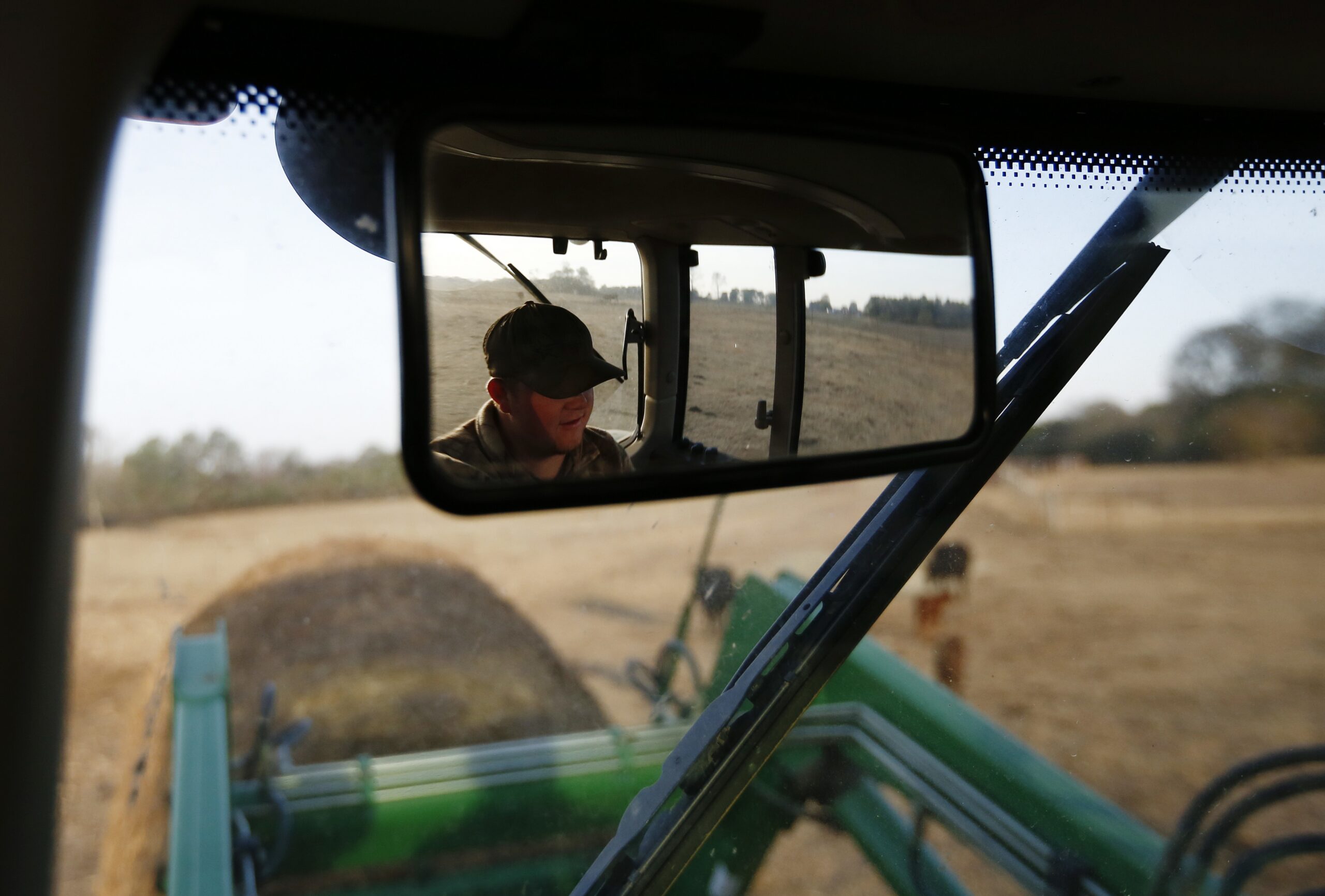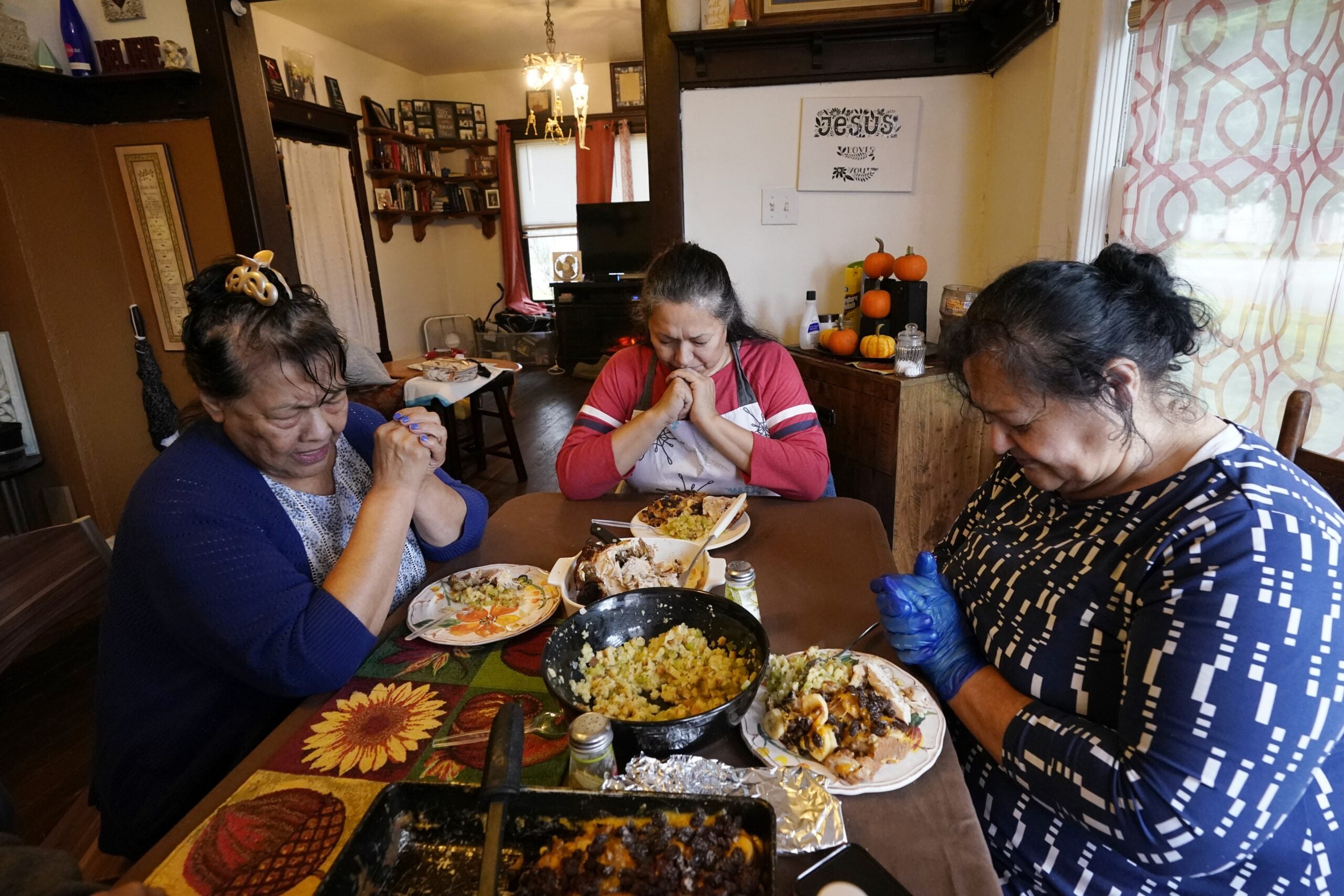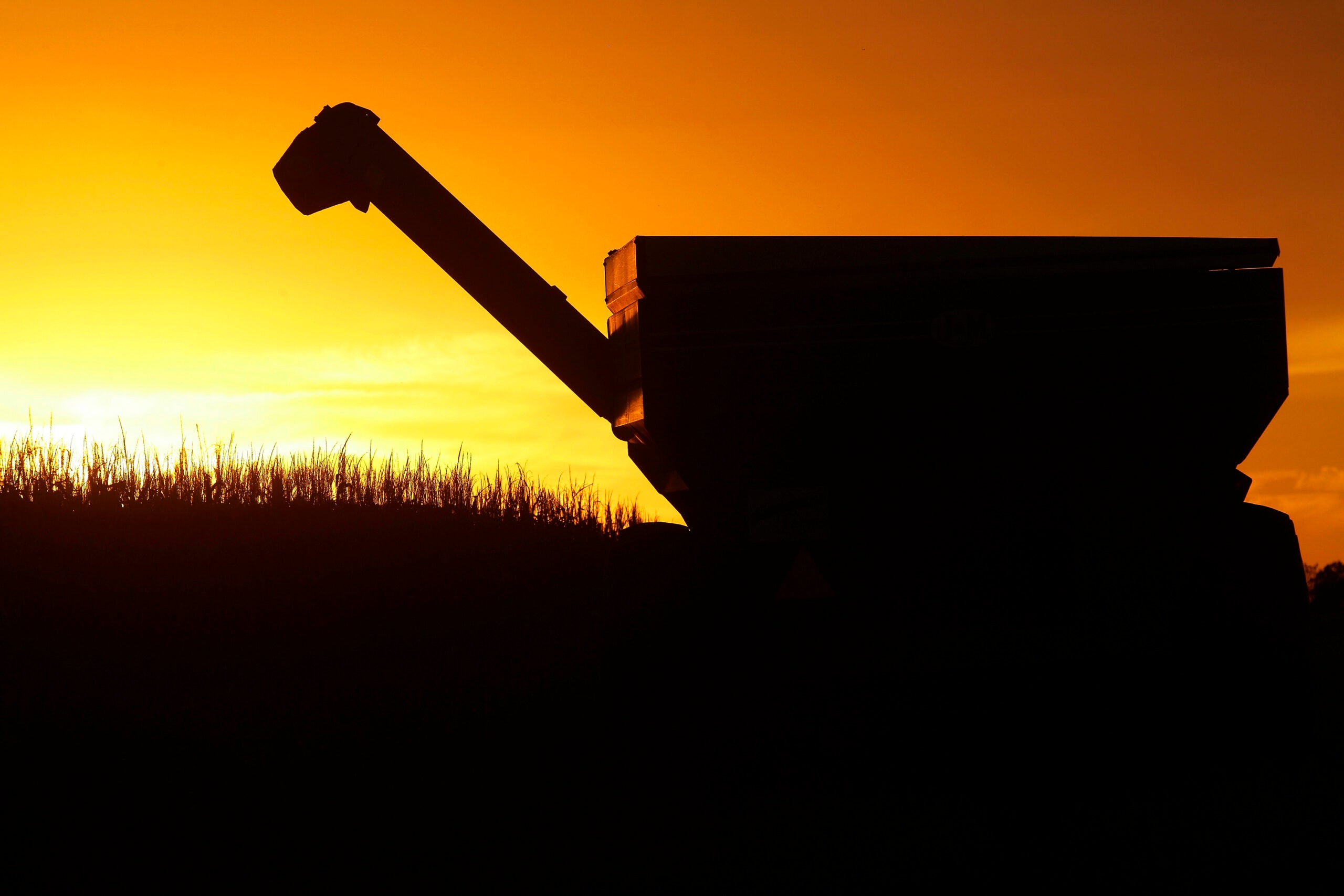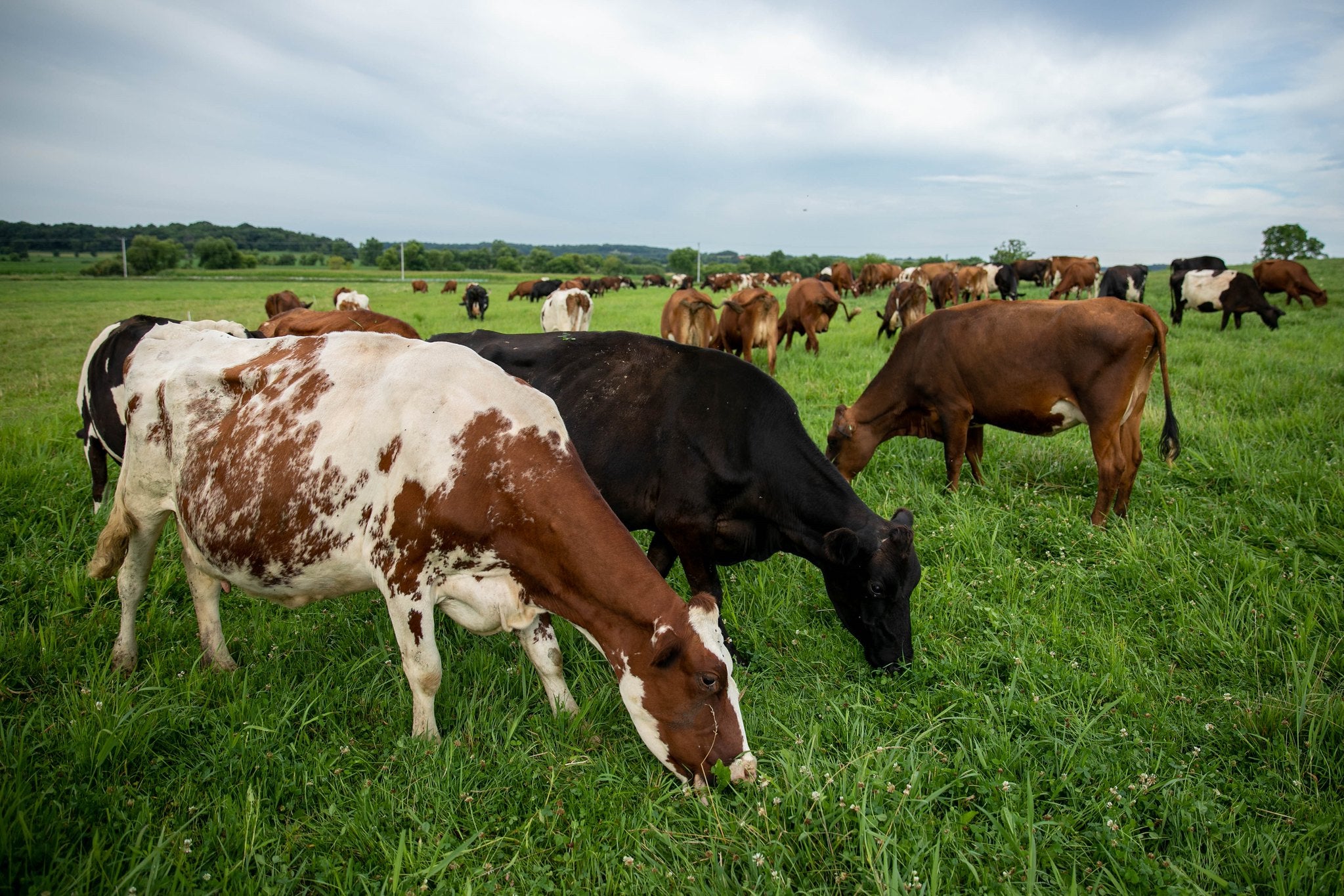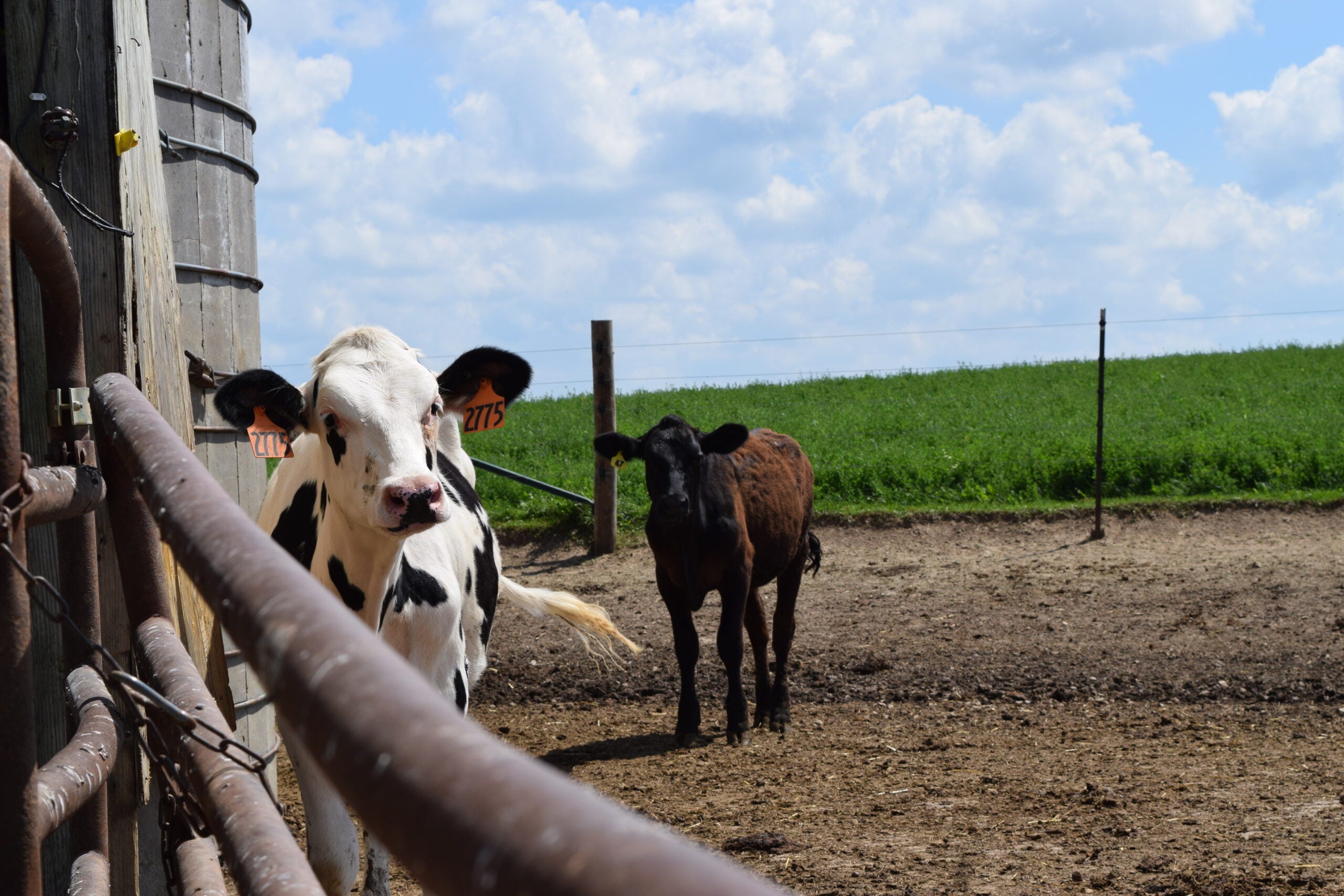Wisconsin farmer groups applauded the U.S. Department of Agriculture’s plans to help farmers impacted by the COVID-19 pandemic, but some leaders caution the aid is only a first step to the support farms need to weather the outbreak.
The USDA announced plans Friday for the Coronavirus Food Assistance Program. The program will provide $16 billion in direct payments to farmers and $3 billion to purchase fresh produce, dairy products and meat for food banks and other non-profit organizations.
Tyler Wenzlaff, government relations director for the Wisconsin Farm Bureau, said his organization hopes this is the first of several commodity purchases by the USDA to help compensate for lost sales to restaurants and the food service industry.
Stay informed on the latest news
Sign up for WPR’s email newsletter.
“There isn’t a supply issue, there isn’t a demand issue. There’s simply a supply chain that is being disrupted,” Wenzlaff said. “There is a demand there for the products that we have from farmers. But it is not readily available in the way that it needs to be sent out.”
He said producers would rather see products getting to market than continue to rely on government payments.
USDA Secretary Sonny Perdue said in a press conference call Friday that the department will work with regional and local distributors to repackage food that would have gone to restaurants, cafeterias and hotels. The wholesale companies will create boxes of fresh produce, dairy products and meat to be distributed at food banks and other nonprofits.
But Paul Mitchell, director of the Renk Agribusiness Institute at the University of Wisconsin-Madison, said it won’t be easy to change the kinds of products processing facilities were built to create.
“They’re extremely efficient at that kind of production, like creating 5-gallon buckets of cottage cheese. You can’t just shut it down and flip a few switches and turn it back on and now it makes little containers of cottage cheese,” Mitchell said.
He said portions will likely be closer to industrial scale than what is seen in grocery stores, similar to the 5-pound blocks of processed cheese distributed by the USDA during the 1980s recession.
The USDA hasn’t released details for how direct payments will be allocated to farmers. The department has said the payments will be based on actual losses experienced by producers so far this year.
The Milwaukee Journal Sentinel reported dairy producers will receive $2.9 billion in payments while $5.1 billion will be set aside for cattle producers and $3.9 billion will go to grain farmers.
Mitchell said the direct payments will likely be similar to those under the Market Facilitation Program, which was created in 2018 to make up for the impact of increased tariffs.
“I expect something like that because it’s much easier to adjust an existing program than it is to create a brand new program from scratch,” Mitchell said.
Bobbi Wilson, government relations associate for the Wisconsin Farmers Union, said her organization wants to make sure the new aid is distributed more fairly. She said too much of the Market Facilitation Program aid went to large producers and meat processors.
“We want to make sure that this is being distributed fairly and that it’s going to help keep our farmers going through this crisis,” Wilson said. “We’re worried about the long-term impacts that any farm exits that happen over the spring and summer will have on our food security and on our rural communities.”
She said Wisconsin Farmers Union is grateful the USDA is moving quickly to get funding into the hands of farmers. But Wilson said her organization would like to see the agency address long-term changes that might be needed.
“We also want to make sure that we’re turning off the nozzle at the source,” Wilson said. “So in the case of dairy, we had an opportunity to also incentivize cutting back on some of the milk supply, which would help with some of the supply chain disruptions that we’re seeing with farmers having to dump their milk.”
The National Milk Producers Federation and the International Dairy Foods Association had asked the USDA to create a voluntary milk reduction program. Their proposal would pay farmers an extra $3 per hundredweight, or 100 pounds of milk, if they lower production by 10 percent.
But in the conference call Friday, Perdue said a supply management program would be a “much longer, more serious contemplation” and would be more expensive to operate.
Perdue said during the call that the USDA would be releasing more details for how farmers can sign up for the new programs in coming weeks. He said the agency hopes to begin distributing payments by the end of May.
Wenzlaff said the Wisconsin Farm Bureau also hopes farmers will be able to benefit from additional funding through the Paycheck Protection Program, created to help small businesses continue to pay their employees during the pandemic. He said the Small Business Association, which distributes the loans, did not provide enough guidance about whether farms were eligible for the forgivable loans before the program ran out of funding.
As federal lawmakers work to approve new money for the program, Wenzlaff said he hopes the Small Business Association will provide further clarity to producers about who is eligible to apply.
Wisconsin Public Radio, © Copyright 2024, Board of Regents of the University of Wisconsin System and Wisconsin Educational Communications Board.

